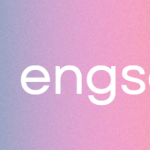Optimizing Screen Brightness for Eye Health: A Comprehensive Guide
Optimizing Screen Brightness for Eye Health: A Comprehensive Guide In today’s digital age, screens have become an integral part of our lives. Whether it’s for work, entertainment, or communication, we spend countless hours staring at screens. However, this prolonged screen time can take a toll on our eyes, leading to discomfort, fatigue, and even long-term damage. One effective way to mitigate these issues is by optimizing screen brightness. In this comprehensive guide, we will explore the importance of screen brightness for eye health and provide practical tips to help you find the perfect balance. Understanding the Impact of Screen Brightness on Eye Health The brightness level of your screen plays a crucial role in determining the strain on your eyes. A screen that is too bright can cause glare, leading to eye fatigue and discomfort. On the other hand, a screen that is too dim can force your eyes to strain, resulting in headaches and blurred vision. Striking the right balance is essential to ensure optimal eye health. Adjusting Screen Brightness for Different Environments One of the key factors to consider when optimizing screen brightness is the environment you are in. For instance, if you are working in a brightly lit room, it is advisable to increase the screen brightness to match the ambient light. Conversely, in a dimly lit room, reducing the screen brightness can help prevent eye strain. Most devices offer automatic brightness adjustment settings that can adapt to changing lighting conditions, making it easier to maintain an optimal level. Finding the Ideal Brightness Level Determining the ideal brightness level for your screen can be a subjective process. However, a general rule of thumb is to set the brightness to a level that is comfortable for your eyes. Start by adjusting the brightness to a moderate level and gradually increase or decrease it until you find the sweet spot. Additionally, it is recommended to use dark mode or invert colors when possible, as this can reduce the overall brightness and minimize eye strain. Taking Breaks and Practicing the 20-20-20 Rule While optimizing screen brightness is crucial, it is equally important to give your eyes regular breaks. Staring at a screen for extended periods can cause eye fatigue and dryness. To combat this, follow the 20-20-20 rule: every 20 minutes, take a 20-second break and focus on an object that is at least 20 feet away. This simple practice can help relax your eye muscles and reduce strain. Conclusion Optimizing screen brightness is a vital step towards maintaining good eye health in the digital era. By understanding the impact of screen brightness, adjusting it according to the environment, finding the ideal level, and taking regular breaks, you can significantly reduce eye strain and discomfort. Prioritizing your eye health will not only enhance your overall well-being but also ensure a more enjoyable and productive screen experience.










